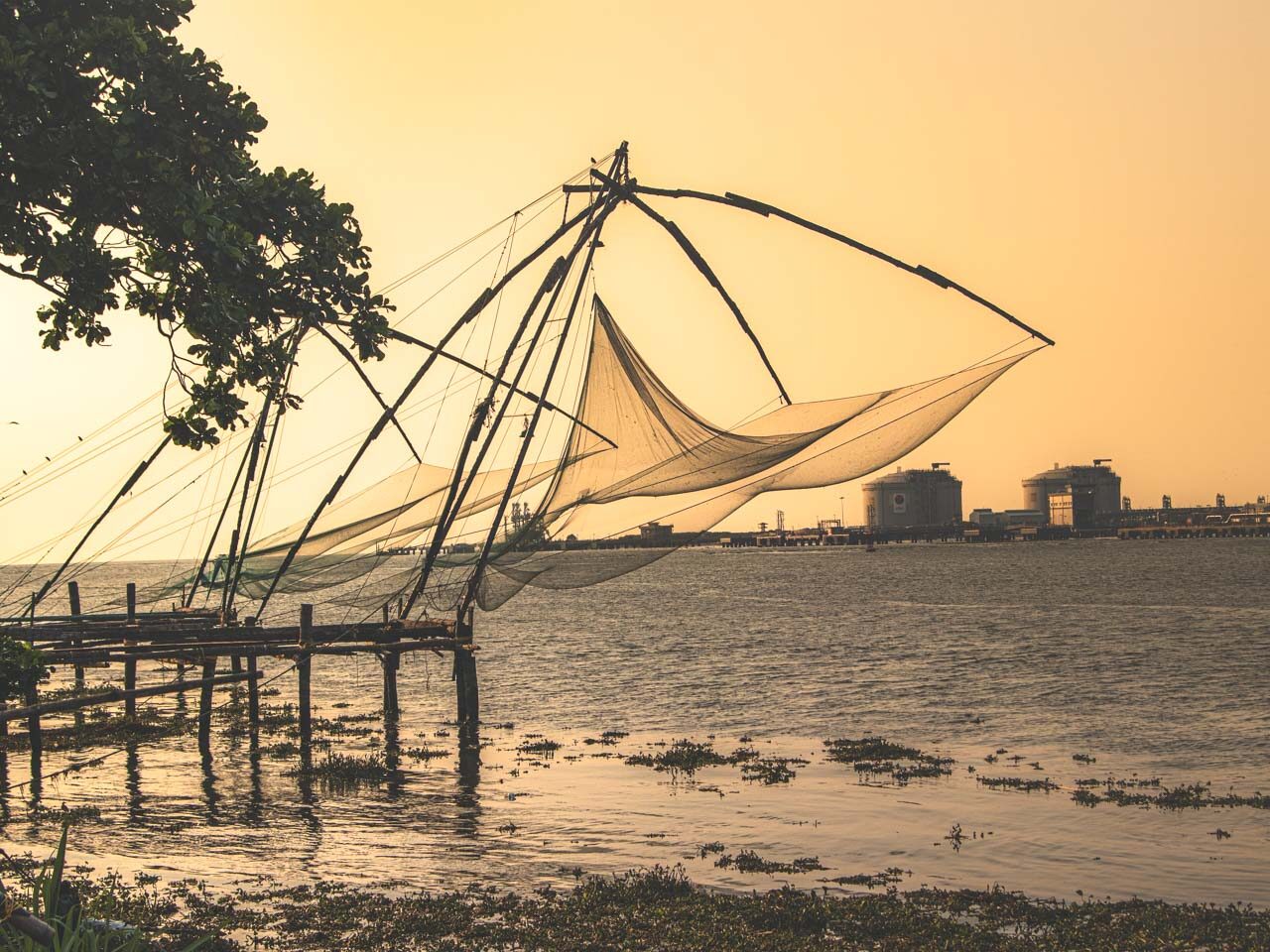No journey through the heart of Kerala would be complete without stopping in Kochi – a city where Portuguese facades brush against colonial verandas, and the air still carries the scent of cardamom and sea.
This is where, 600 years ago, India’s spice trade adventure began. Where Vasco da Gama was laid to rest.
And though Kochi tells its story in many voices – Portuguese, Dutch, British, Chinese, and Jewish – it does so in whispers.
Through narrow streets, the aroma of curry, the movement of fishing nets, and the gaze of an elderly man at Dhobi Khana laundry.
In this guide, I’m inviting you to spend one day in Kochi. A day full of small rituals: from morning coffee in a charming café to evening kathakali that will stay with you longer than you think.
Fell in love with Kochi? See how it fits into a full 3-week South India itinerary. From art cafés and spice markets to jungle treks and golden backwaters – here’s the soulful route I followed, starting right here in Fort Kochi.
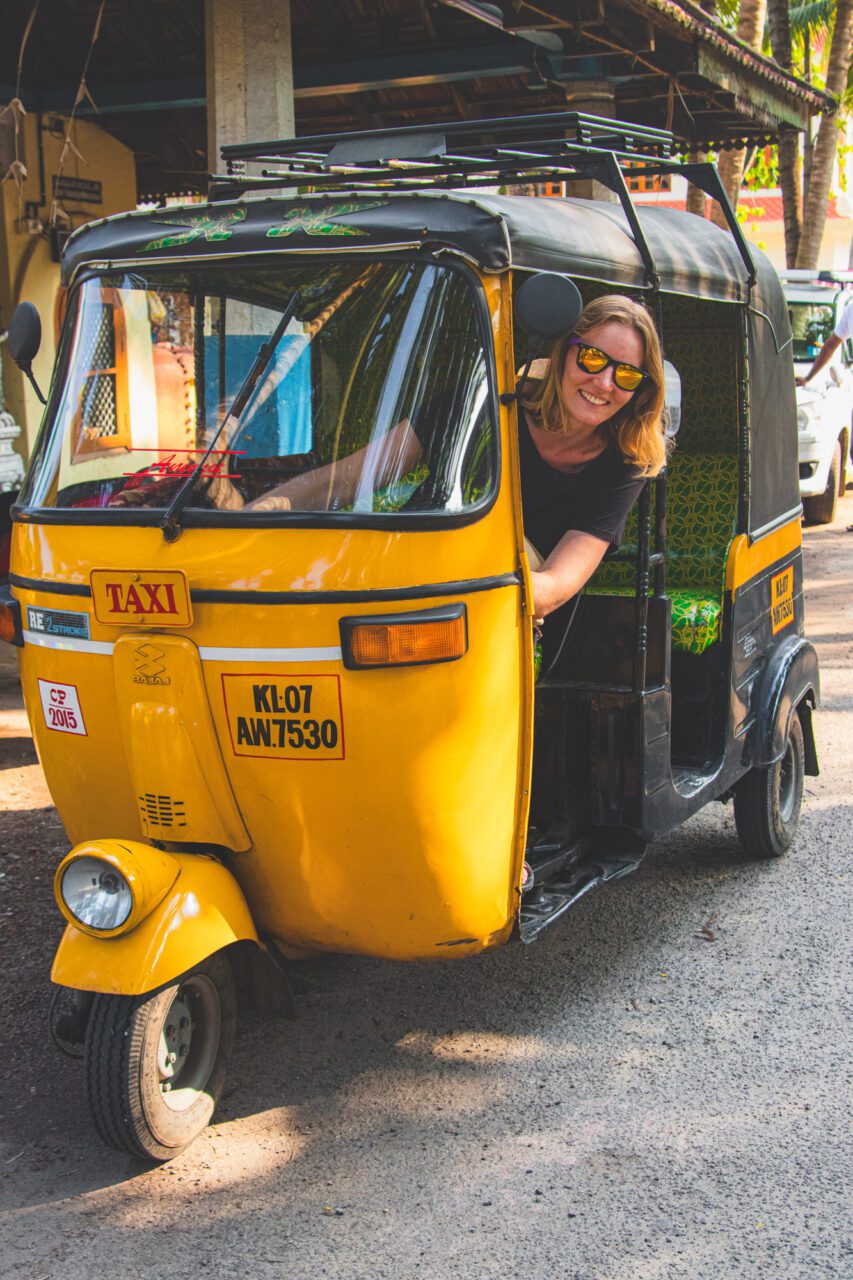
My One Day in Kochi Itinerary Map
Santa Cruz Basilica
It’s worth starting your Kochi exploration at a place that catches your eye from afar – Santa Cruz Basilica. Built in the 16th century, it’s considered one of the most impressive churches in all of India.
Its monumental facade is a harmonious blend of Gothic, Renaissance, and Baroque – as if architects from different eras met on one wall.
The interior? Richly decorated, yet atmospheric. The silence that fills the space makes even tourists move as if whispering.
This place is not just a spiritual sanctuary, but also an important point on Kerala’s cultural heritage map – visited by pilgrims and travelers from around the world.
And though it’s just one of many churches in India, Santa Cruz has something… that stays with you longer.
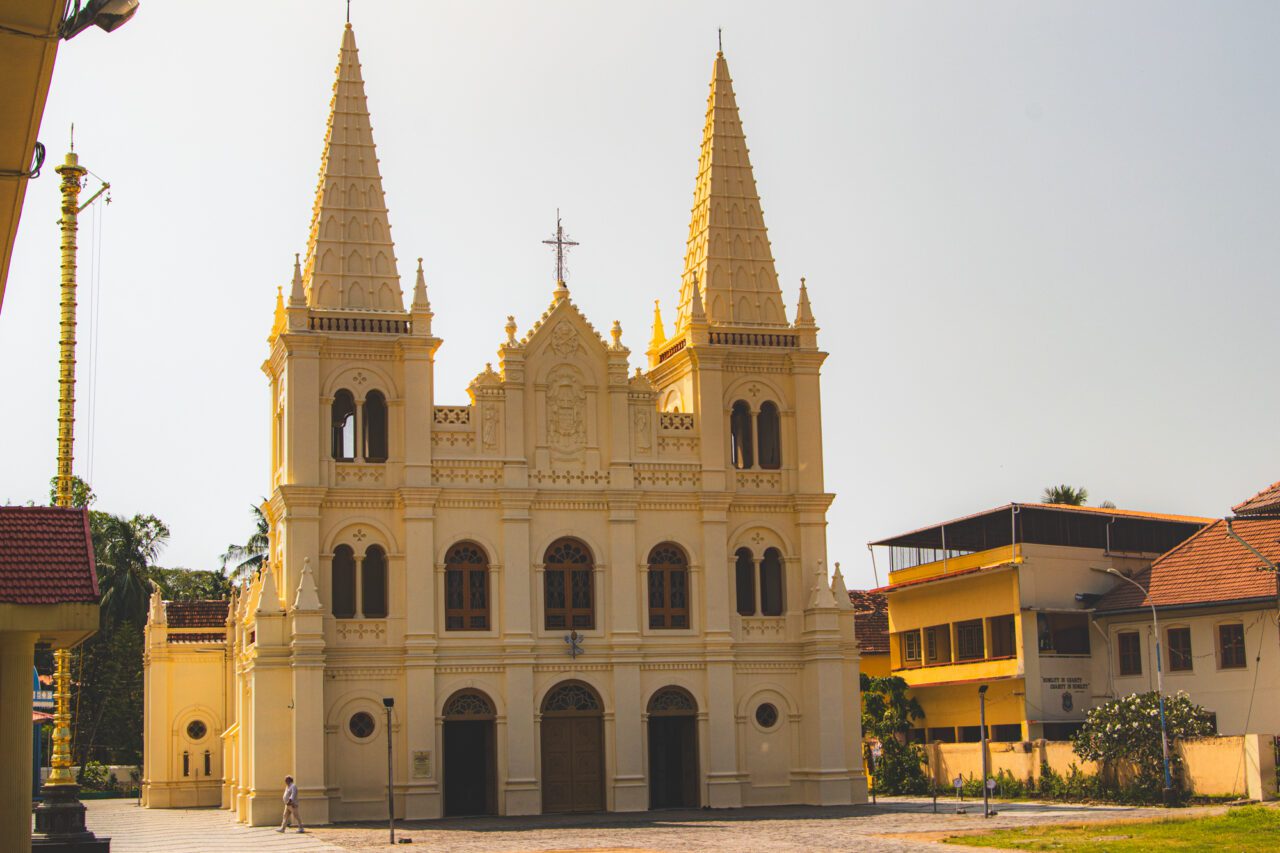
Chez Teapot – Lunch with a Touch of Coconut
Just around the corner, in a colonial building with green shutters and the soul of old Kochi, Chez Teapot awaits – a café that feels more like someone’s home than a restaurant.
The perfect place for a lazy lunch after visiting the basilica. To start: crispy samosas that warm you with spices and golden crust.
Then – local Keralan fish curry. The fish is cooked in creamy coconut sauce, fragrant with curry leaves and southern sunshine.
To drink, definitely mango lassi – velvety, sweet-and-sour, perfectly balancing the spices.
The atmosphere? The kind that makes you want to stay longer than planned. Maybe you’ll just order another tea and allow yourself not to rush.
Indo-Portuguese Museum and the Shadow of the Fort
After lunch at Chez Teapot, it’s worth diving deeper into history – literally. In the heart of the bishop’s garden, among greenery and silence, sits the small but spirited Indo-Portuguese Museum.
Entrance for foreign guests costs 40 rupees – a symbolic amount for a journey through time.
Inside await old crucifixes, statues of saints, reliquaries, and other ecclesiastical memorabilia that remind us how deeply the Portuguese wrote themselves into Kochi’s history.
But the real gem is hidden underground: a fragment of Fort Immanuel – remains of a 16th-century Portuguese fortress.
This place has something mysterious about it – cool walls, damp air, echoes of bygone times. For those who like stories told not with words, but with stone and shadow.
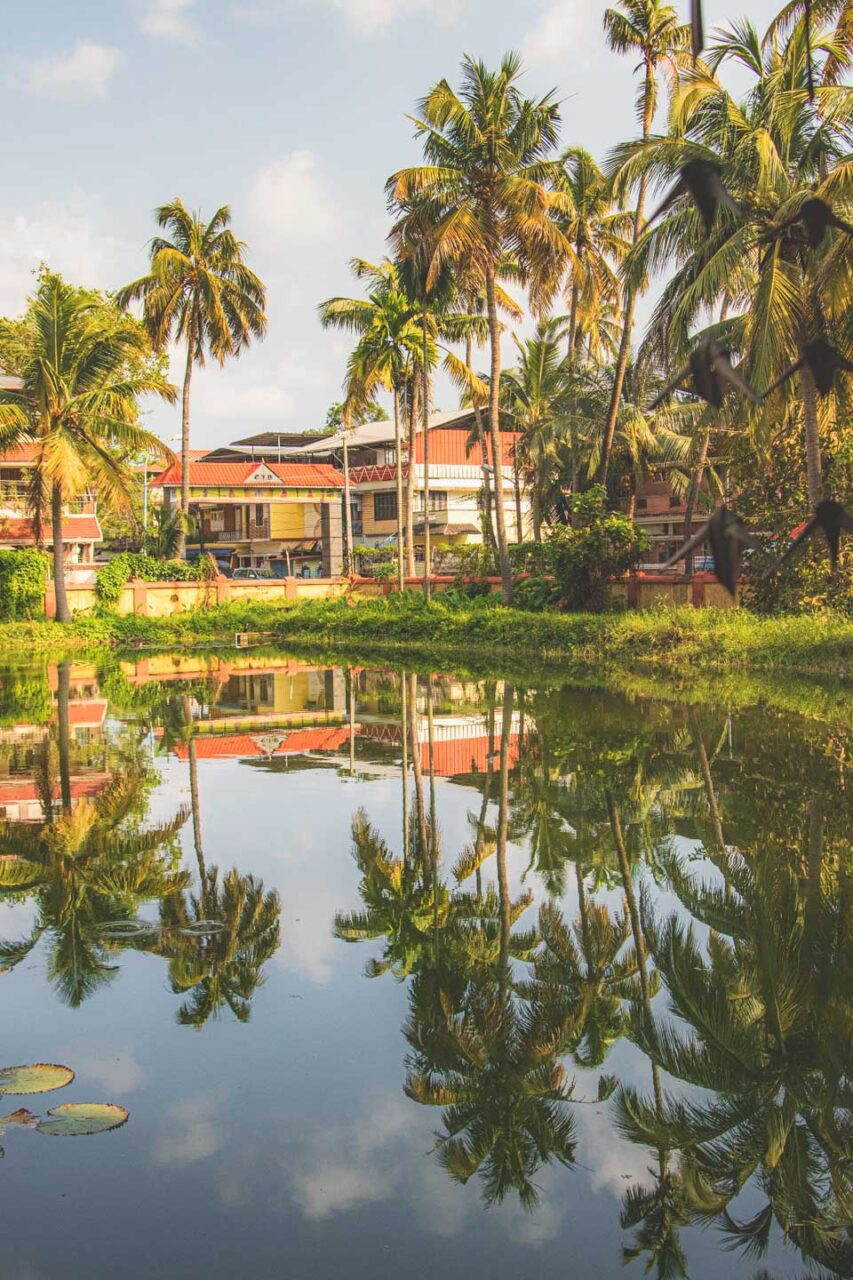
Dutch Cemetery – Echo of Ancient Journeys
In the shade of trees, right by the beach in Fort Kochi, lies a place that’s easy to miss… but you shouldn’t. The Dutch Cemetery is a quiet corner where history speaks in whispers.
Here rest Dutch merchants and soldiers – those who once sailed here in search of spices, adventures, and influence. Grass-covered tombstones, moss-covered inscriptions, a touch of melancholy.
The gate is sometimes locked – if you want to enter, just ask the caretaker from the nearby church for the key. It’s worth it. A brief moment of reflection on those who once – just like us – set out on an unknown journey.
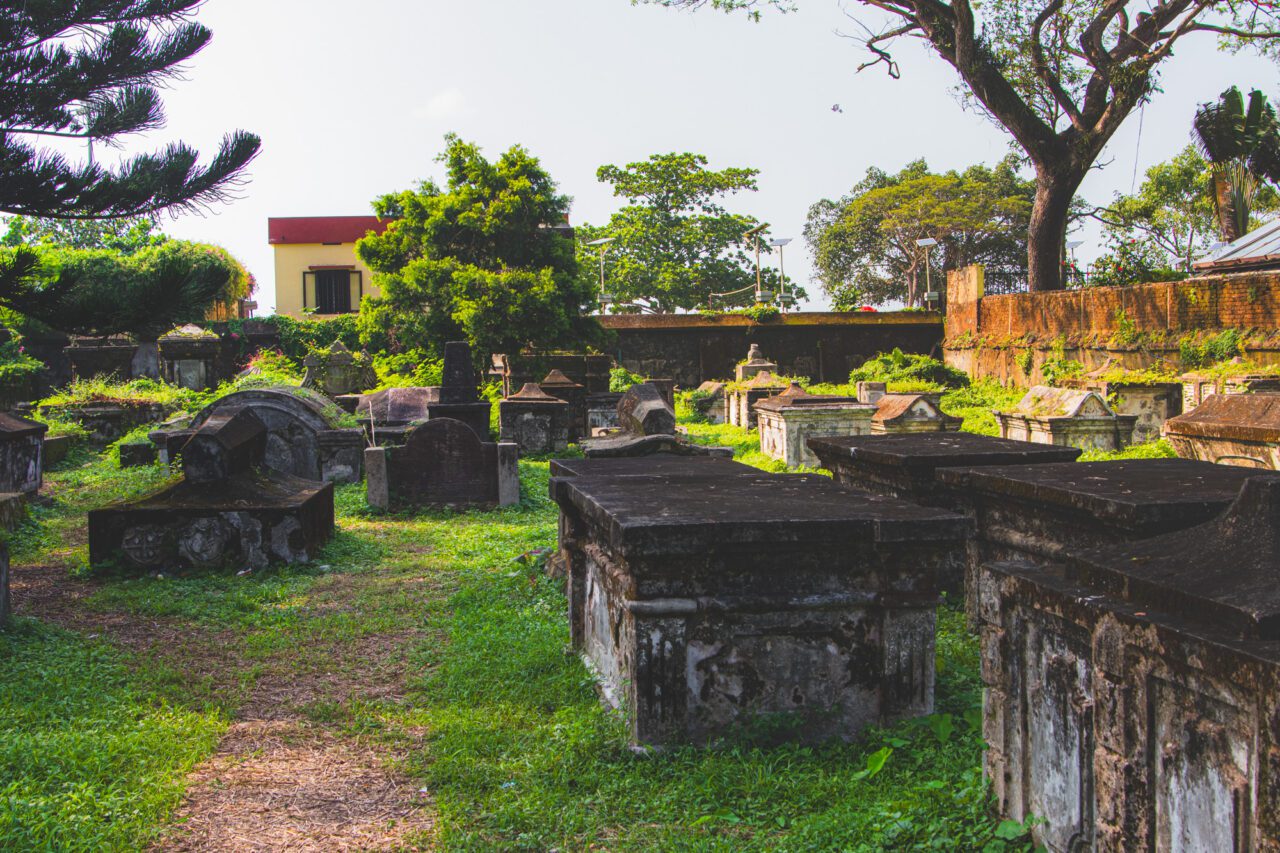
Chinese Fishing Nets – Sunset Theater
You can’t talk about Kochi without mentioning the Chinese fishing nets. These – stretched over the water like spider legs, quietly creaking in the wind – have become the symbol of the city and its maritime heritage.
They first appeared here supposedly during the time of Mongolian Khan Kublai. Today they reach up to 10 meters in height and require several people to lift and lower them.
Increasingly rarely used for actual fishing – they’re more like a scene from an ancient theater, performed daily for tourists and the setting sun.
Today, instead of the sound of water and creaking ropes, you’re more likely to hear camera shutters and the movement of crowds on the pier.
And yet – despite all this noise – this is one of those places that doesn’t need to do anything more than… exist.
Just stand for a moment in silence and watch how the nets dance with the wind, and the light changes minute by minute. This moment stays with you for a long time.
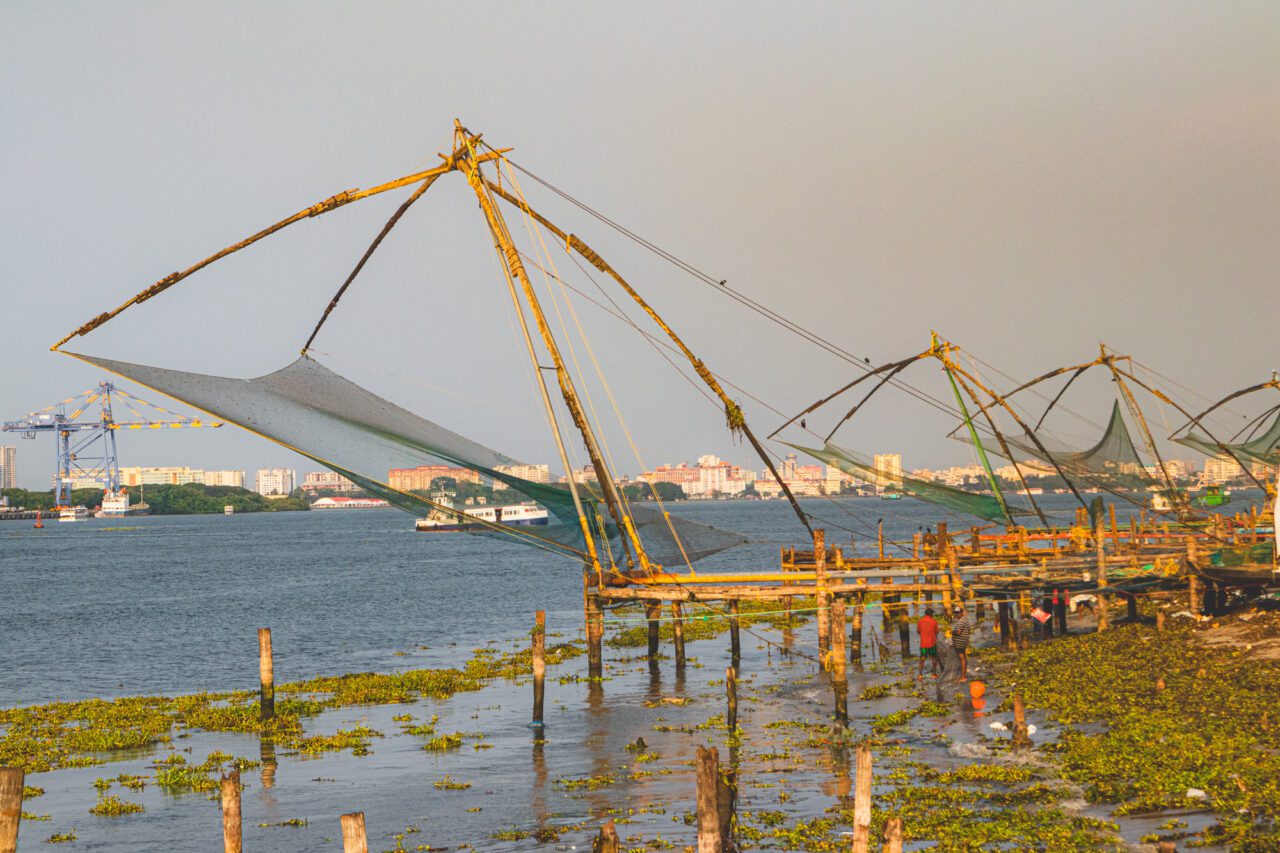
Fort Beach – A View Worth Skipping (For Now)
Though Fort Kochi has many charming corners, the beach unfortunately isn’t one of them.
Instead of waves and sand – piling garbage and a feeling of disappointment. A place that must have once teemed with life today makes a rather sad impression.
They say the authorities are planning remedial actions. I’m keeping my fingers crossed, because this place really deserves a second chance.
Fish Market – Where Sea Meets Fire
On the edge of Fort Kochi, where the fishing nets end and real life begins, stretches the fish market.
Loud, fragrant, wet from ice and waves. Fishermen have just returned from their morning catch – fish glisten in the sun, and shrimp still move slightly on the counter.
You can buy everything: from small fish, through crabs and clams, to large red snappers.
But the best is yet to come – choose your delicacy, and at one of the nearby stalls, a cook will prepare it for you on a hot pan, with spices that smell like ocean and southern sun.
This isn’t an elegant place. It’s authentic. A bit chaotic, a bit wet, very local. But if you’re looking for the taste of real Kerala – you’ll find it right here.
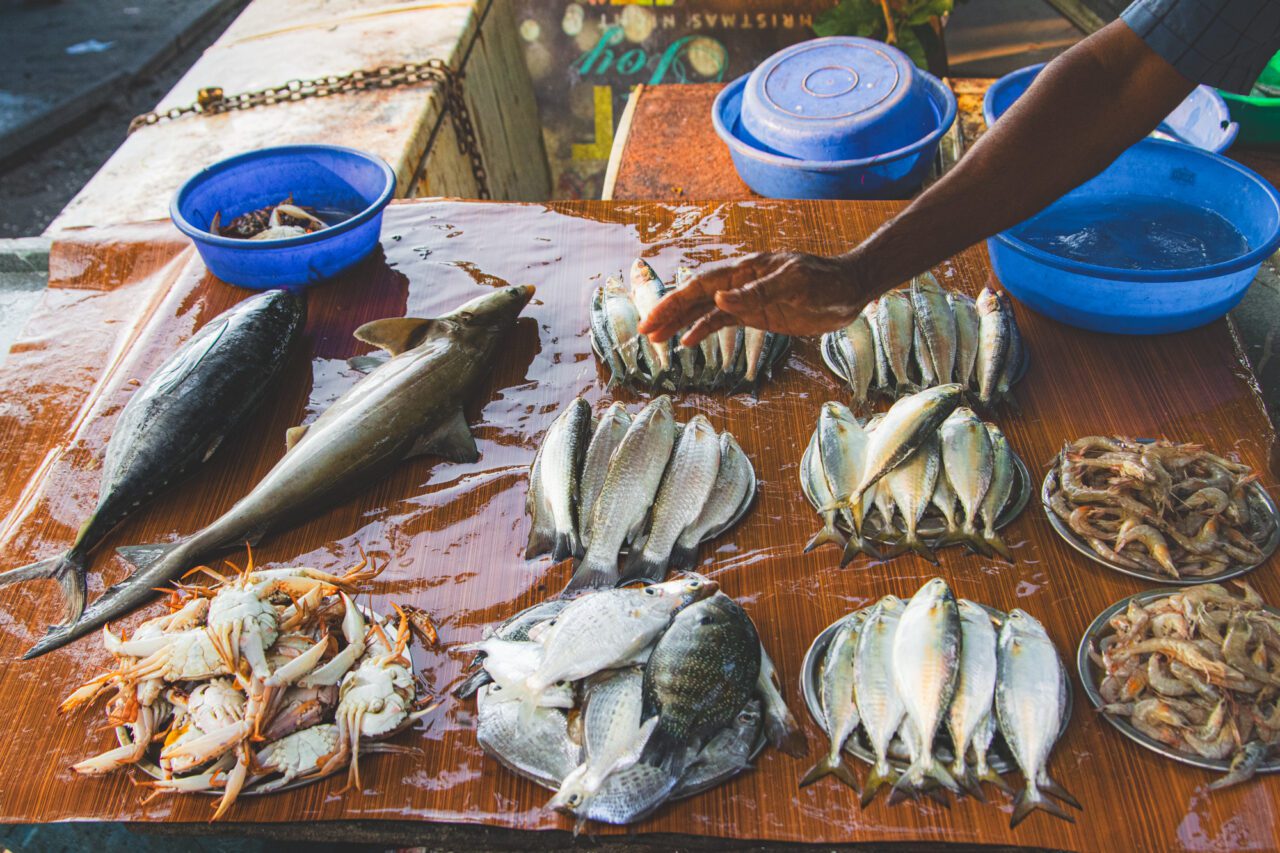
Dhobi Khana – The Scent of Soap and Daily Ritual
In a world where everything can be done faster and quieter, Dhobi Khana remains unchanged – probably the last public laundry in all of Kerala, run for generations by the Tamil community.
Here, washing is still done by hand, in concrete tanks called khanas – each assigned to one family.
Upon entering, you’re immediately hit by the smell of soap, rhythmic splashing of water, and… walls covered with colorful murals.
In the background, a radio plays, someone sings under their breath, someone else scrubs a white shirt as if their life depended on it.

The drying area is a real spectacle – hundreds of fabrics dancing in the wind like prayer flags.
And if you’re brave, you can try ironing something yourself using a heavy coal-fired iron. I tried. And humbly returned it.
This is one of those places that remind us that everyday life can be a ritual, and simplicity – a form of art. And that strength doesn’t always lie in machines, but in human hands and hearts.

Planning your perfect India adventure?
I share hidden temples, sunrise spots, and insider tips from every incredible destination I explore across India and beyond.
Bonus for new subscribers: My Mumbai map with 100+ attractions for your phone 📱
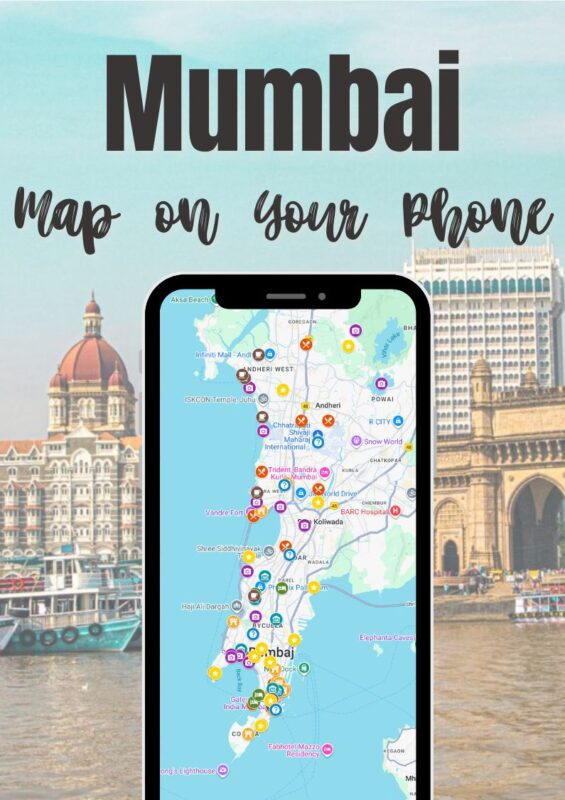
Mattancherry – Traces of the Past Among Kashmiri Fabrics
After visiting Dhobi Khana, it’s worth heading to another part of Kochi – Mattancherry, once a thriving Jewish quarter.
Once – full of cultural mosaic and peace. Today – somewhat dominated by Kashmiri souvenir sellers, which means that of the old atmosphere, mainly walls and memories remain.
And yet… it’s worth coming here. Worth walking slowly.
Thirumala Devaswom Temple
Start your walk at the 16th-century Thirumala Devaswom Temple – small, but full of beliefs and incense scents. This place is more for locals than tourists – and perhaps that’s why it’s so precious.
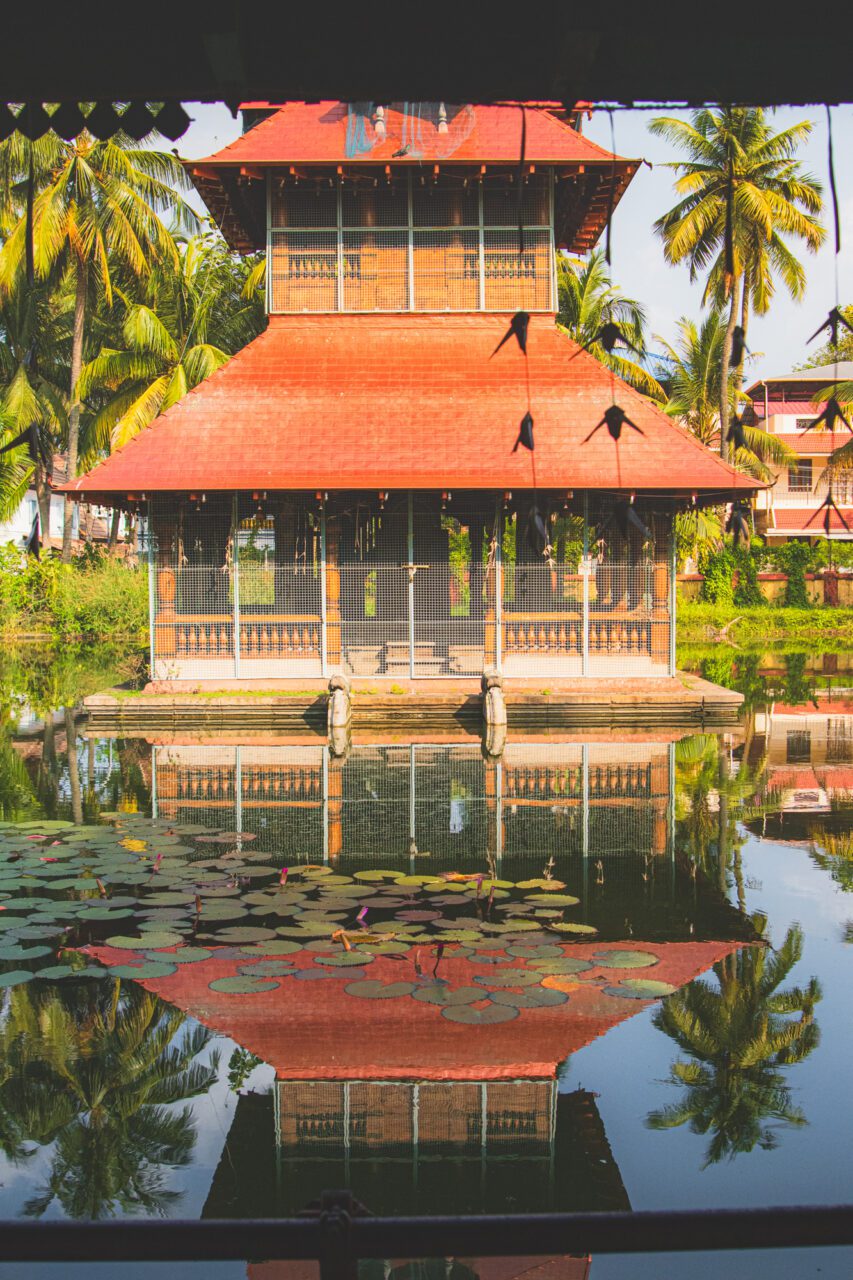
Paradesi Synagogue
Then peek into Paradesi Synagogue – the quarter’s most important point and one of the oldest Jewish houses of prayer in India. Its history dates back to the 17th century, when it was rebuilt by the Dutch.
Inside – a golden bima (pulpit), intricately made chandeliers, and Chinese tiles brought all the way from Canton.
Each one different. None repeating. The place has a silence that can’t be described – you just have to enter and hear it yourself.
Photography is prohibited in the synagogue – and rightly so. This is one of those corners of the world that should remain in memory, not in your phone.
Mattancherry Palace – A Gift from the Portuguese
Just beyond the Jewish quarter, in the shade of old trees and brick walls, stands Mattancherry Palace, also called the Dutch Palace – though it was built by… the Portuguese.
It was a gift to the Raja of Kochi in exchange for trading rights. An elegant gesture? Or a calculated investment. Either way – the palace still stands today.
The interior is captivating. Not with gold or marble, but with walls told in brushstrokes.
You’ll find hundreds of square meters of paintings here – scenes from the Ramayana, portraits of former rulers, stories told in color and movement.
This isn’t a place that overwhelms. Rather, it invites you to enter a world from centuries past – with silence, the scent of wood, and delicate light seeping through the shutters.
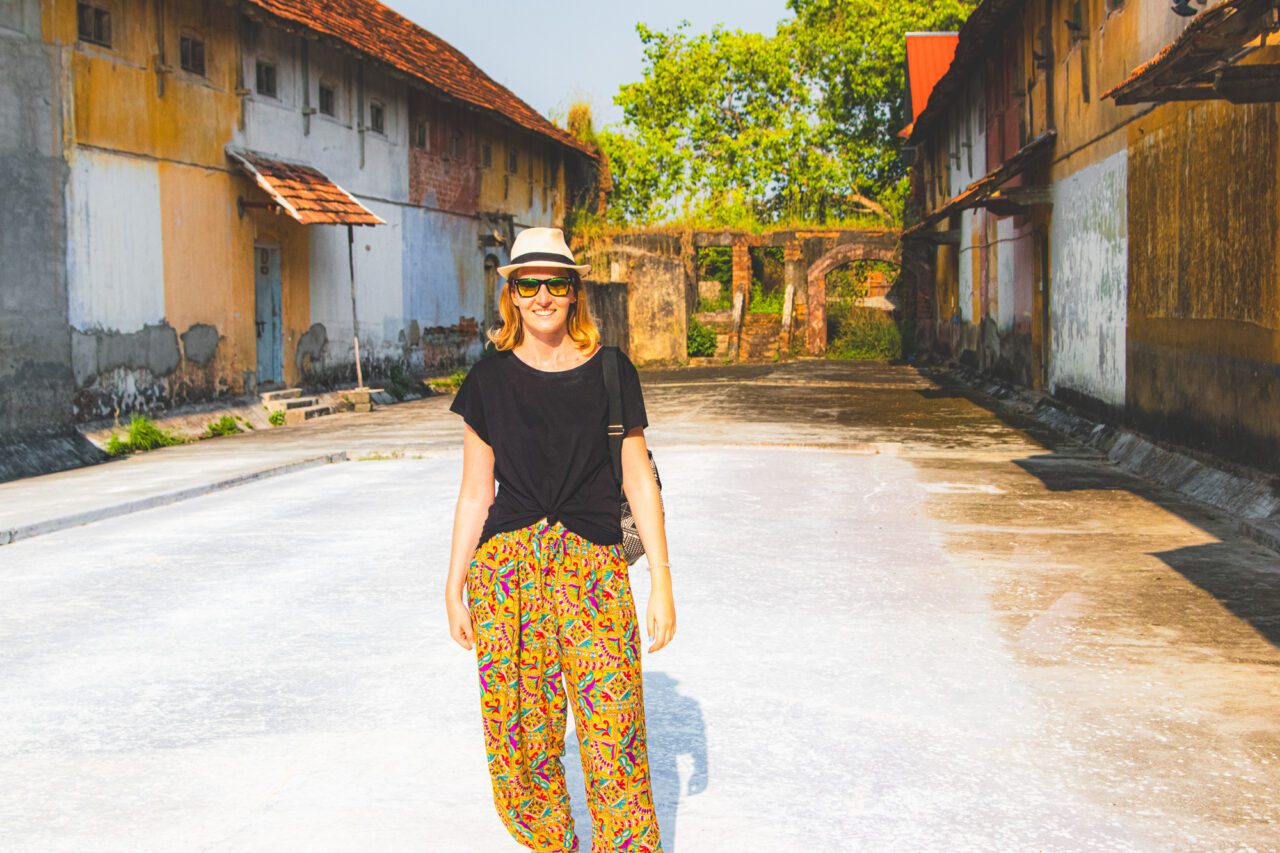
Pepper Exchange – Where the History of Flavor Began
Just a few steps from the palace, in the shadow of old walls and under a somewhat sagging roof, hides a place that smells of… story. Once – an international pepper exchange, today – a spice market full of colors and aromas.
This is where black pepper – the king of spices – set out into the world. From the ports of the Malabar Coast onto ships that changed the course of history and the taste of European tables.
Though more touristy than commercial today, this place still breathes with its former significance.
You don’t have to buy anything. Just walk slowly between sacks of turmeric, dried ginger, and cardamom, observing what hasn’t changed – the vendors’ gazes, the rhythm of packing, scents that don’t fit in a suitcase.
Be sure to peek into the inner courtyard – sometimes, with a bit of luck, you can see locals laying out fresh ginger to dry. This isn’t a museum – it’s still a pulsing ritual of everyday life.
Who knows – maybe if not for these people and those ancient journeys, our kitchens today would be completely different?
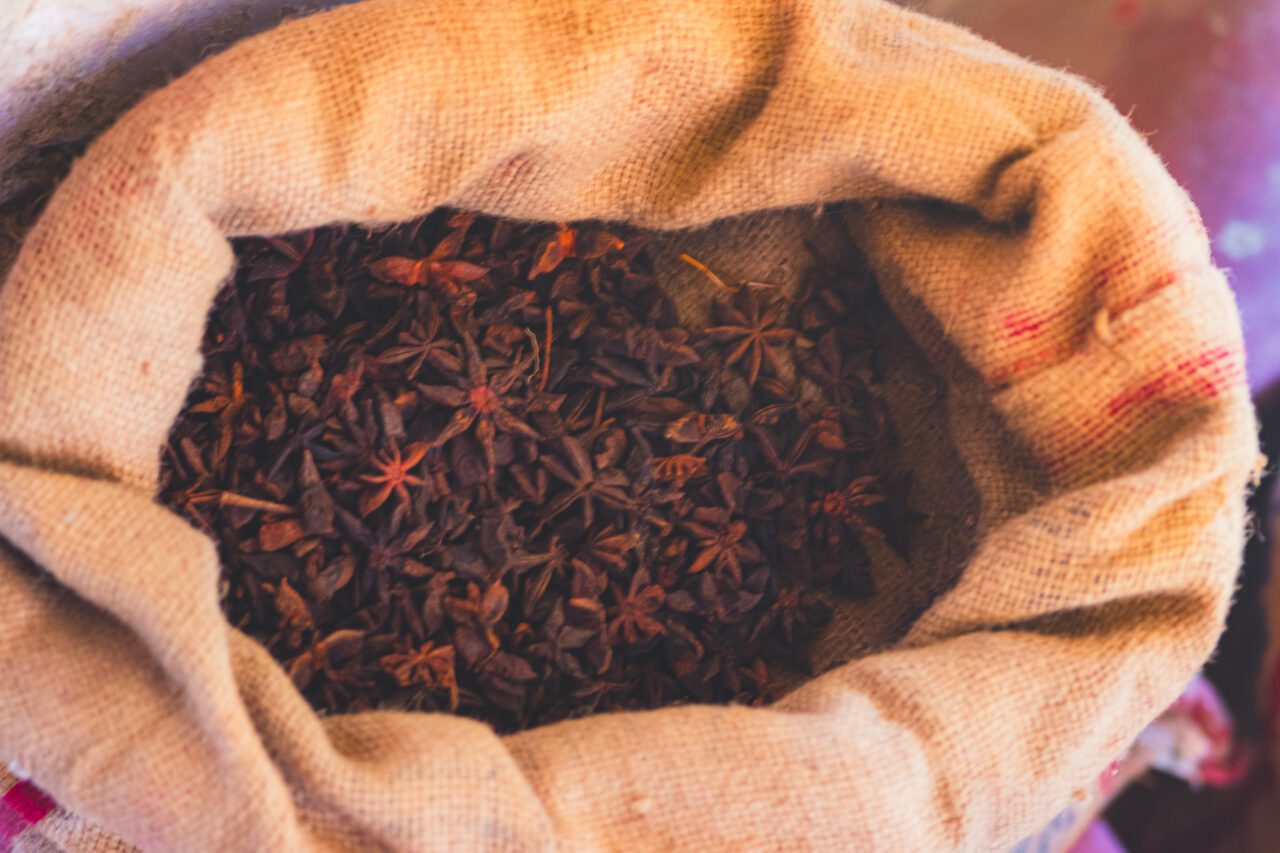
Kashi Art Café – Taste Among Art and Silence
At the end of a day full of impressions, when the city starts breathing quieter, it’s worth stopping by a place that combines art, taste, and breath – Kashi Art Café.
Hidden in one of Fort Kochi’s streets, this café captivates from the threshold.
The interior resembles a gallery – with local art on the walls, lush greenery, and tables set up in the garden. You feel peace and lightness here. And nothing needs to be pretended.
The menu? Simple, fresh, Western with a Keralan twist. Try the grilled fish with pasta, homemade pastas, baked goods, or one of their signature fruit cocktails. Everything served without pretension, but with soul.
This isn’t just a restaurant – it’s a space where you can sit for a moment and really feel that travel isn’t just about sightseeing. It’s also about taste. And silence. And art eaten with a spoon.
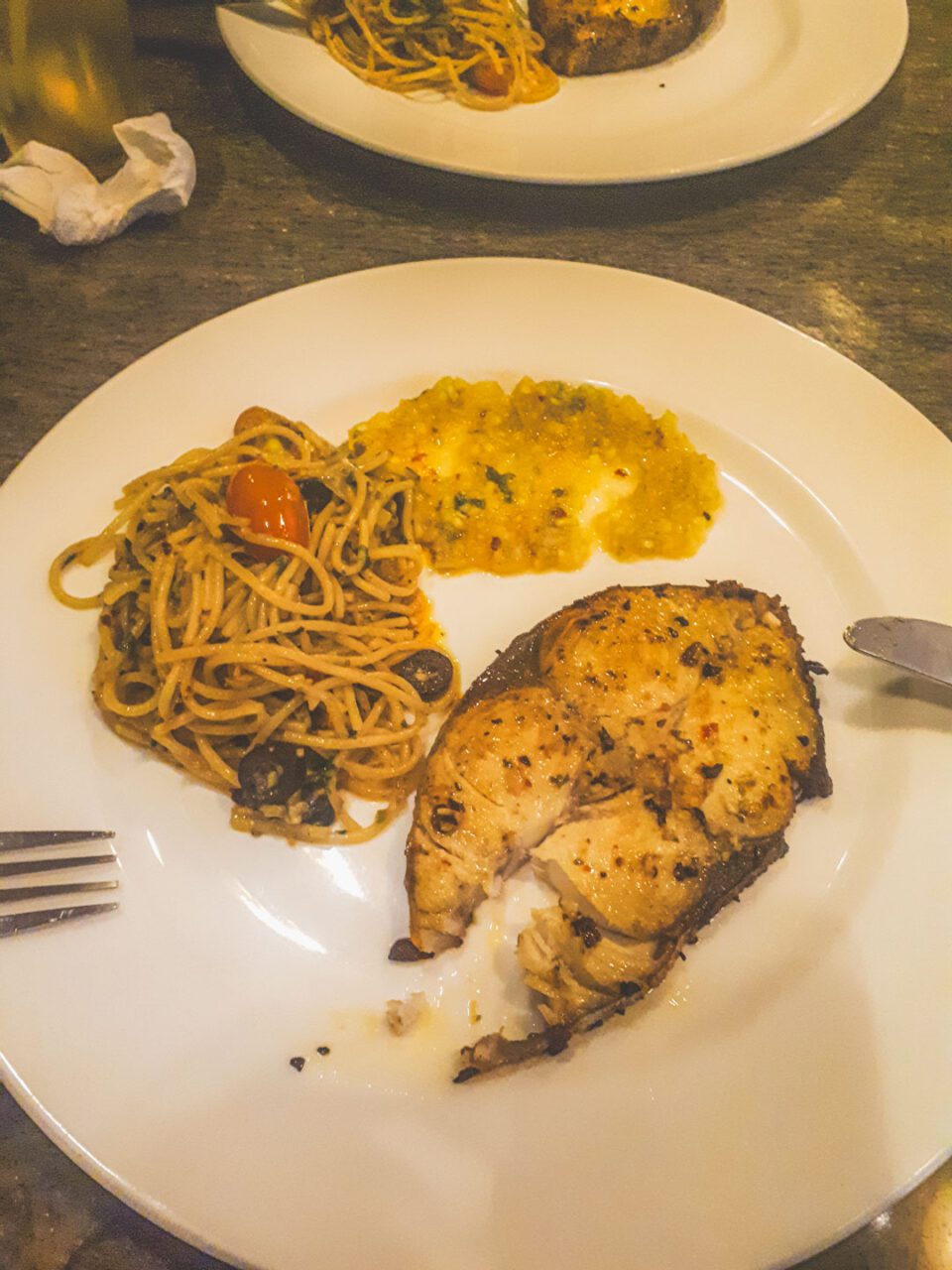
How do you want to explore India next?
🏖️ Beach Paradise → Palolem Goa Guide – A little paradise in Goa
🏛️ Ancient Ruins → What to See in Hampi – The magical ruins of a royal city
🏔️ Best Views → Matanga Hill Guide – The best sunrise in Hampi
🏙️ City Adventure → Mumbai Travel Guide – India’s vibrant metropolis
What calls to you most?
Kathakali – When Dance Becomes Prayer
At the end of the day, when Fort Kochi’s streets quiet down and the air thickens with humidity and incense scent, it’s worth immersing yourself in something that will stay with you for a long time.
Kathakali – Kerala’s traditional art, isn’t just dance. It’s ritual, theater, prayer, and metaphor, told through movement, gaze, and color.
At Kerala Kathakali Centre, you can see the entire preparation process – actors paint themselves in front of the audience, applying colorful symbols of divine figures to their faces.
Green face – god. Red – anger. Black – demon. They use natural pigments, including powdered turkey berry, so the eyes look like they’re burning with sun.
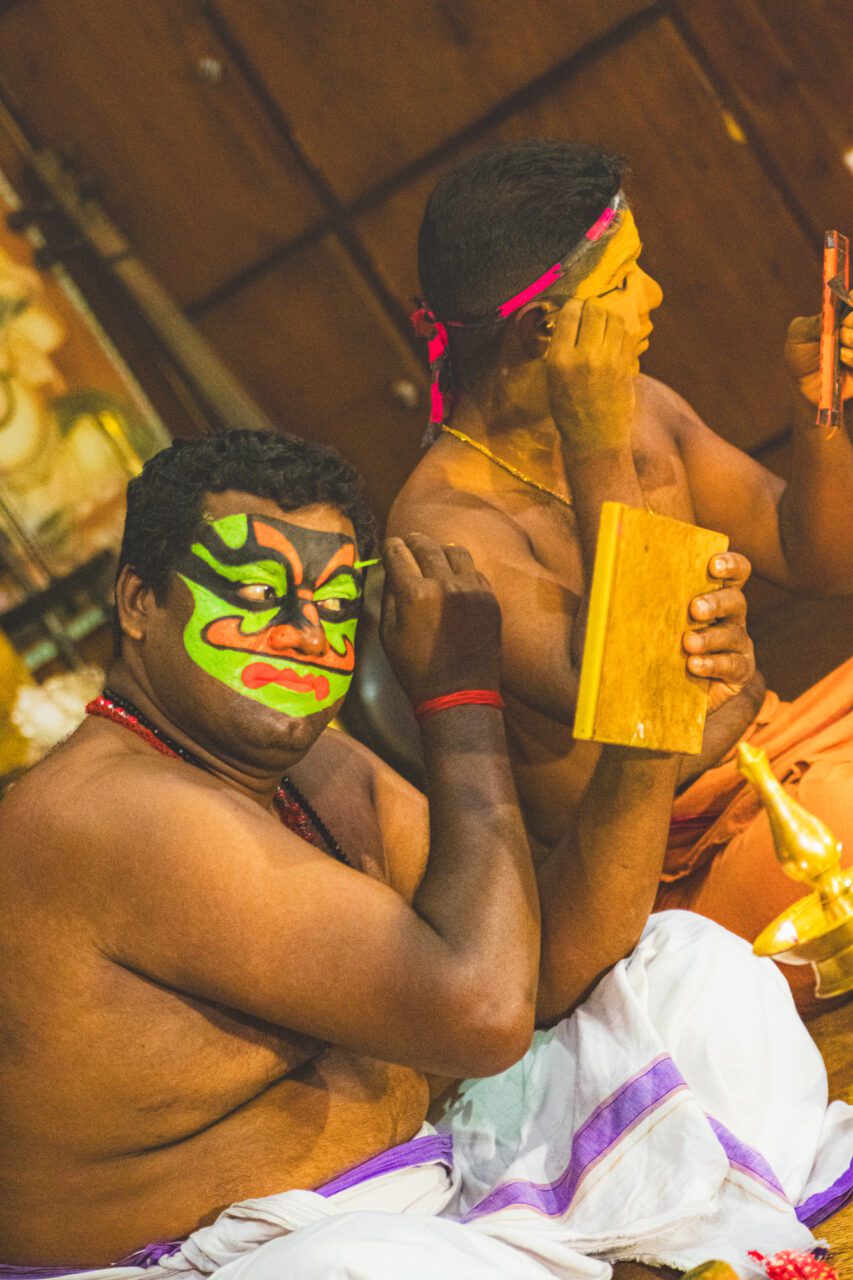
Scenes from the Mahabharata and Ramayana are told without words. Only with gaze, hand gesture (mudra), rhythm of feet.
Everything synchronized with music – drummers and singers lead the narrative, and actors dance as if on the border of dream and waking.
For us – visitors from the West – this experience was more than a performance. It was meditation in movement. Every detail – from facial expressions to hand arrangement – seemed practiced to perfection, but not mechanical. Alive.
The ticket costs more than the average attraction (about 600 rupees), but trust me – it’s worth it. No visit to Kochi is complete without an evening spent with kathakali. This is one of those experiences that’s hard to describe and even harder to forget.
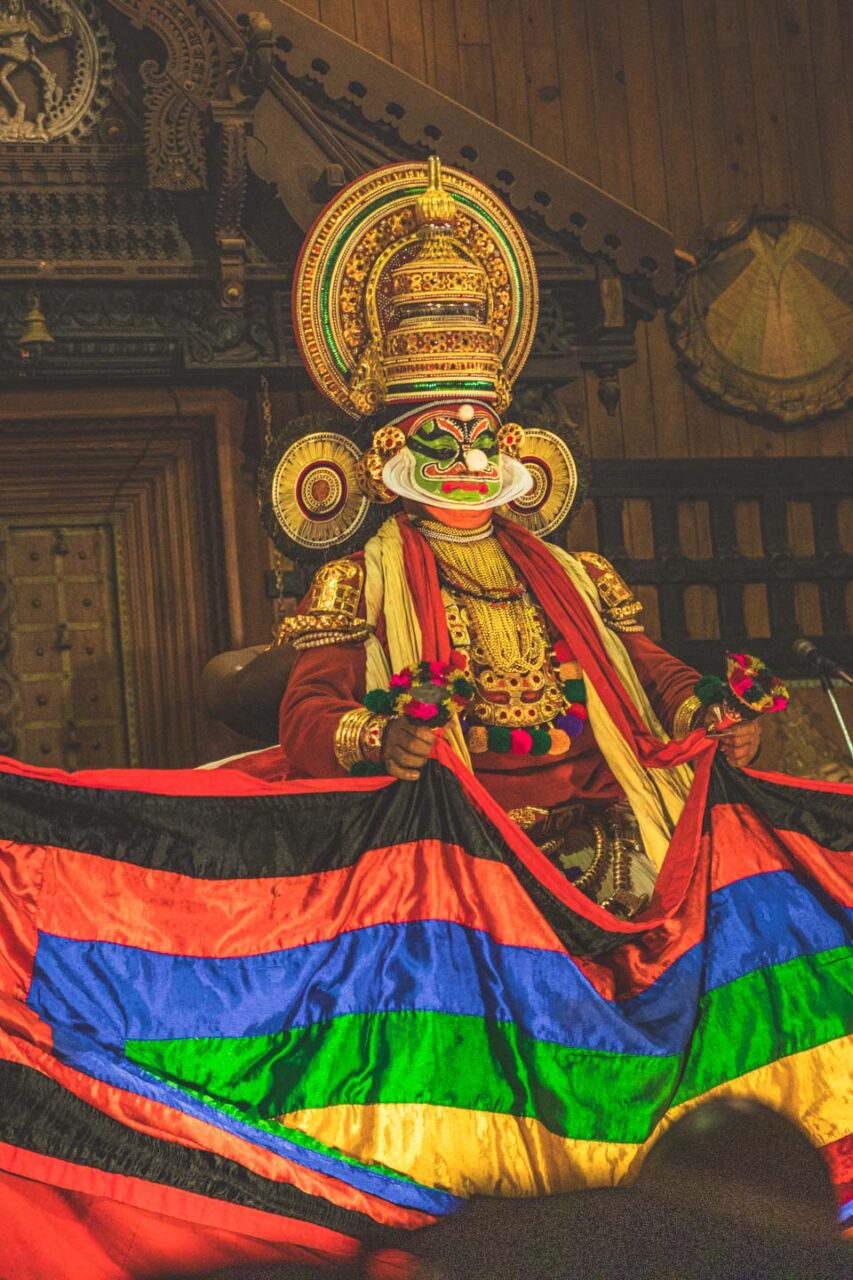
When to Visit Kochi
The best time to visit Kochi is from October to March – when temperatures are mild, humidity is lower, and afternoons invite walks without a trace of rush.
However, if you want a more intimate experience, it’s worth considering the pre- and post-season months – from April to September.
You’ll have to deal with more heat and humidity then, but… you get something in return. More space, fewer tourists, more local atmosphere.
I visited Kochi in November – and it was a bullseye. The sun wasn’t overwhelming, the streets weren’t crowded, and the climate was ideal for unhurried sightseeing and daily rituals – from morning coffee to evening kathakali.
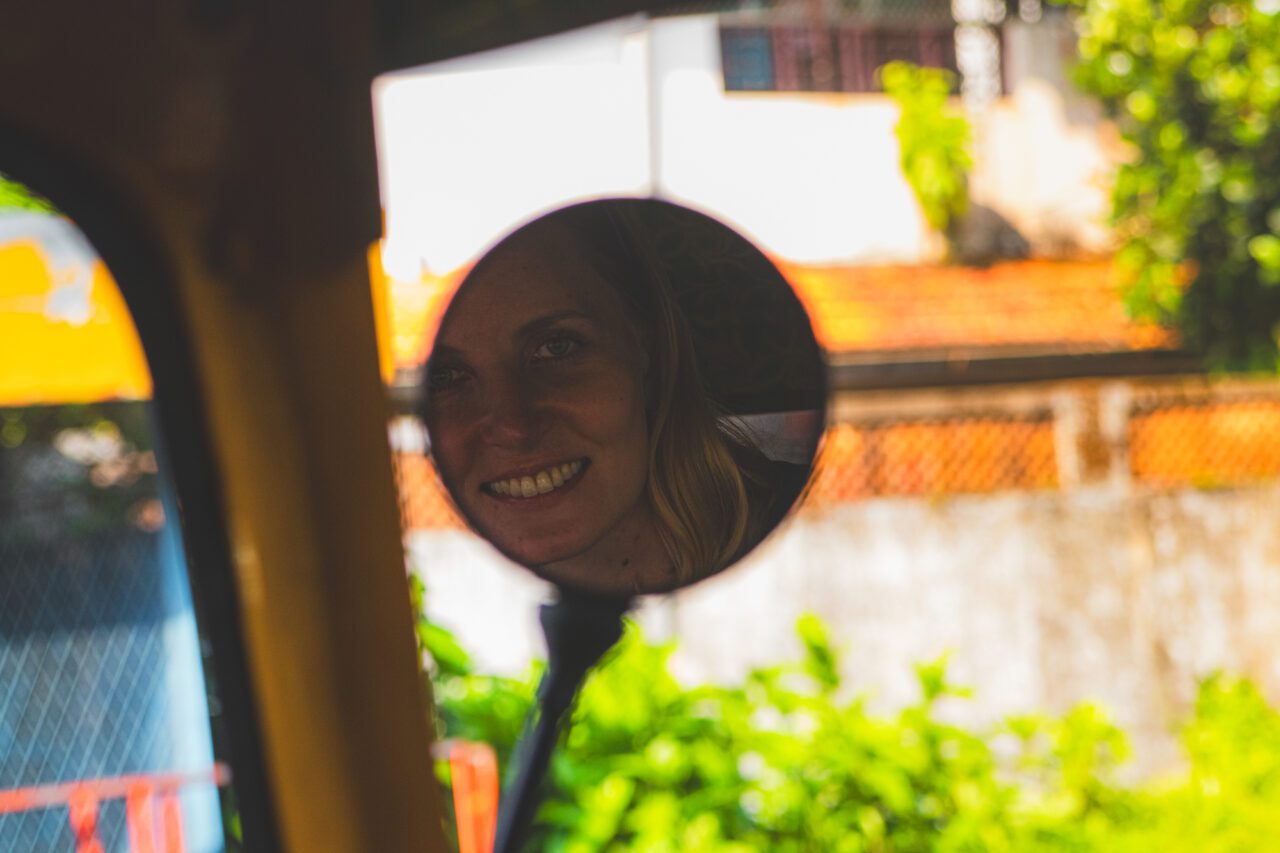
Where to Stay in Kochi? Only at Priya’s
When heading to Kochi, it’s worth staying with the incredibly smiling and hospitable Priya at the atmospheric, family-run Maison Casero Homestay.
If you’re looking for a place with soul, where mornings smell of ginger and the hosts’ smiles are genuine, not learned – choose Maison Casero Homestay.
This is a family guesthouse run by Priya, whose warmth makes you feel from the first moment not like a guest, but like someone long-awaited.
The house is located a few steps from the heart of Fort Kochi, but far enough away to be quiet and peaceful.
My bedroom was simple but tastefully decorated, with a private bathroom and terrace where homemade breakfast awaited in the morning – served with tea and care.
It was on this terrace, among ferns and ceramic cups, that I started each day.
This place doesn’t offer luxury. It offers something much more: warmth, authenticity, and a real encounter with the local rhythm of life.
If I could – I would have stayed longer. Because no one hosts you like Priya.

Travel Budget Calculator
Get your free Travel Budget Calculator now and plan your trip without the stress of overspending!
What Kochi Taught Me About Slowing Down
When I first sat on Priya’s terrace with a cup of tea in my hand, watching the city wake up slowly, something clicked in me. This wasn’t another destination to check off – it was a place that taught me to slow down.
Kochi isn’t just a point on Kerala’s map. It’s a story – about spices, about cultural interweaving, about art written in dance, and about everyday life that can be beautiful in its simplicity.
Regardless of whether you come here for flavors, architecture, kathakali, or simply for a breath – this city stays with you longer.
In the scent of turmeric. In the silence of the Dutch cemetery. In the hand movements during kathakali. And in the Tamil woman’s gaze as she hangs laundry at Dhobi Khana.
For me, this journey was a lesson in mindfulness. It taught me that not everything important shouts.
That beauty can be found in everyday things – in a hand-ironed shirt, in tea drunk on a terrace, in a conversation that doesn’t need translation.
I understood that travel isn’t just about wonder – it’s also about meeting a rhythm that isn’t mine. And that it’s precisely this rhythm that stays in me longer than postcards.
Ready to explore more of incredible India?
- Palolem Guide – Find Goa’s most beautiful hidden beach
- Complete Hampi Guide – Discover all 12 temples and ruins you can’t miss
- Matanga Hill – The best sunrise in all of India
- Mumbai Travel Guide – Navigate India’s most vibrant city with confidence
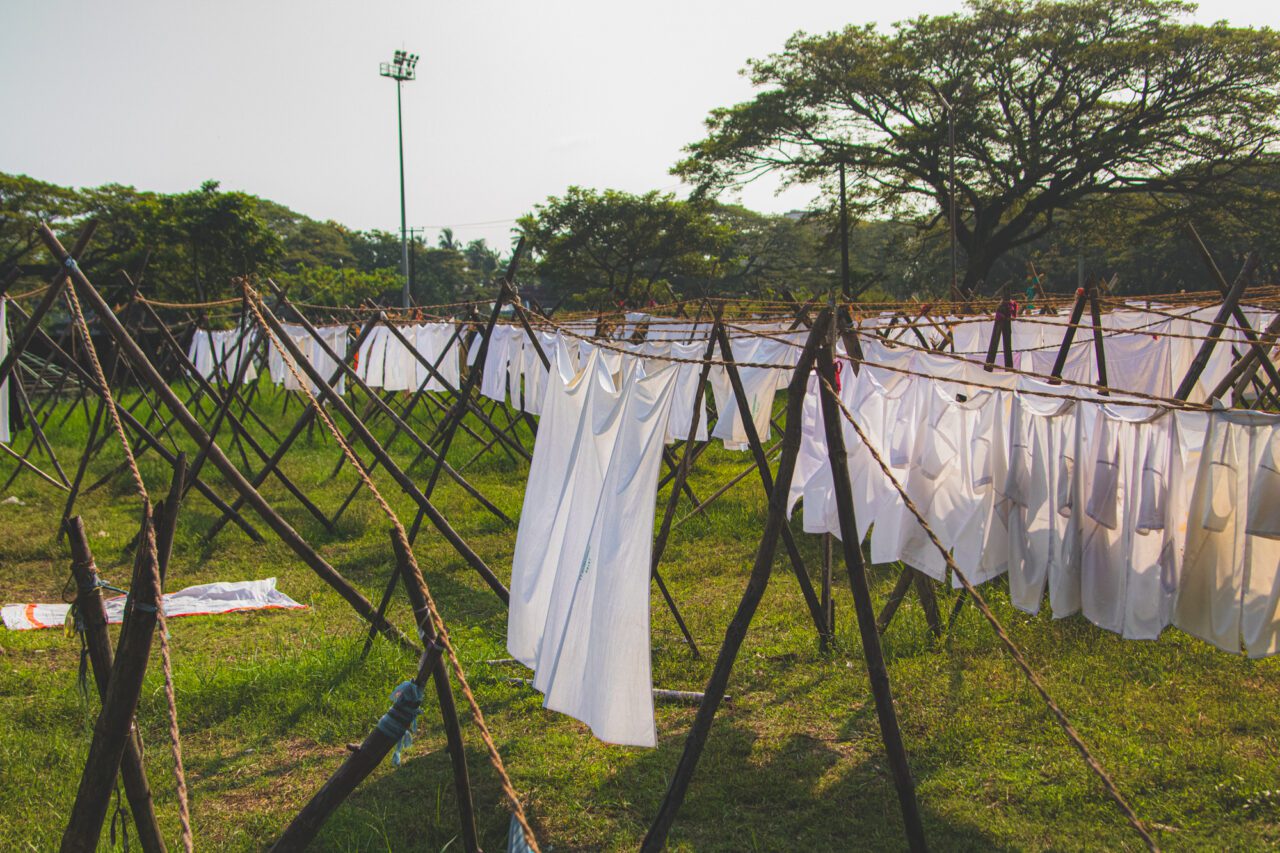
Have you been to Kochi? What moved you most – kathakali, the scents from the spice market, or maybe the silence in the synagogue?
Share this with someone planning an Indian adventure and tell me about your Kerala experiences in the comments!
Pin it for later!
This article contains affiliate links. If you make a booking through these links, I may earn a commission, supporting this blog. Rest assured, my recommendations are based on honest assessments, and using these links doesn't affect prices for you. Thank you for your support!
